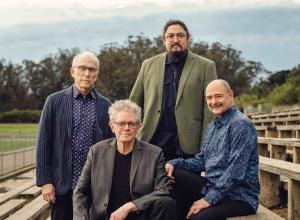Harry Potter and History Collide at The New York Academy of Medicine
Yesterday marked twenty years since J.K. Rowling's Harry Potter and the Philosopher's Stone was first published, and with 450 million books sold worldwide, "Pottermania" shows no signs of abating; the British Library is hosting a "Harry Potter: A History of Magic" in October, publisher Bloomsbury books issued a celebratory party pack filled with games, puzzles, and books, and the New York Academy of Medicine (NYAM) just launched a digital collection highlighting the historical and scientific connections behind many of the elements in the series.
Entitled "How to Pass Your O.W.L's at Hogwarts: A Prep Course," the digial exhibition examines forty of the nearly 33,000 rare books and manuscripts housed at the NYAM and their connection to the Harry Potter books. Rare books curator Anne Garner said the show is a natural fit. "The genesis of the show was finding a way to attract more kids to the library," she said. "When visitors come to the rare book room, they often say it looks like Hogwarts, and when we realized the 20th anniversary of Harry Potter was coming up, mounting this show made even more sense."
Rowling's background in the classics provided much grist for her books, where spells and creatures often have Latin roots--and the NYAM's show illustrates where she pulled from history. Organized thematically by seven courses taught throughout the Harry Potter series, the collection appears like a fictional study guide to assist would-be wizards in their studies.
Take the section entitled Herbology, for example: "Some plants are good for spells and not for others," explained Garner. "In Book Two [The Chamber of Secrets] Harry goes to a class where the teacher is instructing how to repot mandrakes. Mandrake roots look eerily human, and in the fifteenth century, there was a superstition that if you pulled a mandrake root out of the ground, it would scream." An incunable on display from 1499 called Hortus sanitus (Garden of Health) exhorts would-be botanists to use a dog and earmuffs to pull mandrakes out of the ground. "Harry's professor tells his students to wear earmuffs when they're pulling out mandrakes. Clearly, Rowling was familiar with these ancient treatises and incorporated them into her books."
The Serpent of Slytherin also has roots in medieval lore. "The word basilisk comes from the Greek word basiliskos -- little king--and the ancients believed it was a mythical snake with a head in the shape of a crown, whose mere gaze could kill," said Garner. Rowling's basilisk in The Chamber of Secrets is also a monstrous beast with killer eyes owned by the villainous Slytherin.
Even Nicholas Flamel, a pivotal character in the first book, is based on an actual person. "Flamel appears in Book One as a 600-year-old alchemist and is credited with discovering and making the philosopher's stone, the pinnacle of chemical achievement that led to eternal life," said Garner. "In fact, the actual Flamel wasn't an alchemist, but a fourteenth-century French bookseller and scribe who married well." Seventeenth century booksellers revived Flamel as an expert in the hermetic arts--a popular topic at the time-- and the NYAM's display includes a text on hieroglyphics attributed to Flamel, but was likely fabricated by the author, William Salmon, to generate reader interest.
The images are accessible online only, but the library does welcome vistors by appointment. "Filmmakers, genaolgy researchers, even cookbook writers visit our collections because we house centuries of documentation relating to how humans view and care for their bodies through history," Garner said.
The New York Academy of Medicine is located at 1216 Fifth Avenue at 103rd Street New York, NY. View the Harry Potter-themed online collection here.
Image credits: The New York Academy of Medicine.

















